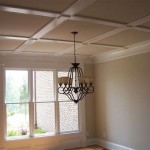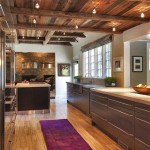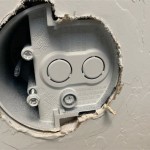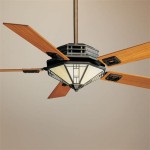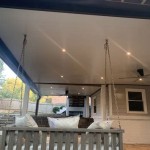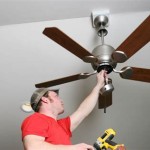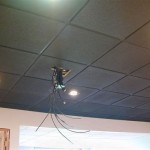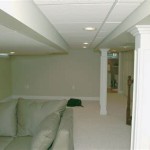Can You Put Crown Molding on Angled Ceilings?
Crown molding, a decorative trim traditionally installed where walls meet the ceiling, adds a touch of elegance and sophistication to interior spaces. Its presence elevates the aesthetic appeal, providing a visual transition between the wall and the ceiling. However, the standard application of crown molding typically assumes a 90-degree angle between the wall and the ceiling. Angled ceilings, often found in attics, vaulted rooms, or uniquely designed spaces, present a different challenge. The question arises: is it feasible and aesthetically pleasing to install crown molding on angled ceilings?
The answer is affirmative, but the process involves modifications to standard techniques and careful consideration of the specific angle and overall design. Successfully installing crown molding on an angled ceiling requires understanding the geometry involved, mastering specific cutting techniques, and adapting the installation approach to accommodate the non-standard angle. While it may seem daunting, with the right tools, knowledge, and patience, crown molding can be effectively installed to enhance the beauty of rooms with angled ceilings.
The viability of installing crown molding on an angled ceiling depends largely on the severity of the angle. A slight angle may only require minor adjustments in the cutting and installation process. However, a more pronounced angle necessitates more significant modifications, potentially including custom-built adaptations or the use of flexible molding. The structural integrity of the wall and ceiling is also a factor. Uneven surfaces or weak materials may require reinforcement before installing crown molding.
Furthermore, the choice of crown molding profile plays a crucial role. Ornate, complex profiles may be more difficult to install on angled ceilings due to the intricate cuts required. Simpler, less detailed profiles often lend themselves better to angled installations. The room's overall style should also be considered to ensure the crown molding complements the existing décor and architecture.
Understanding the Challenges of Angled Ceiling Crown Molding
The primary challenge in installing crown molding on an angled ceiling lies in achieving precise miter cuts. Standard miter saws are designed to cut angles based on a 90-degree reference point. When dealing with an angled ceiling, the actual angle between the wall and ceiling must be determined to calculate the correct miter angles for the crown molding. This calculation often requires the use of a protractor or angle finder to accurately measure the existing angle.
Once the angle is determined, trigonometric functions or online calculators may be utilized to determine the specific miter and bevel angles required for the crown molding cuts. The miter angle refers to the angle at which the two pieces of crown molding meet along a corner, while the bevel angle refers to the angle at which the saw blade is tilted relative to the material being cut. Inaccurate measurements or calculations will result in gaps or misalignments in the finished product.
Another challenge arises from the fact that standard crown molding installation techniques assume that the crown molding is flush against both the wall and the ceiling. On an angled ceiling, this is not always possible. The crown molding may only be in full contact with one surface, requiring adjustments to the anchoring method. This often involves using shims or blocks to provide support and ensure a secure attachment.
The type of material used for the crown molding can also pose a challenge. Wood crown molding, while aesthetically pleasing, is more rigid and less forgiving than other options. Flexible crown molding, made from materials like polyurethane, is designed to bend and conform to irregular surfaces, making it a more suitable choice for certain angled ceiling applications. However, flexible molding may not offer the same level of detail or durability as wood molding.
Techniques for Installing Crown Molding on Angled Ceilings
Successful installation of crown molding on angled ceilings relies on several key techniques. The first step is accurate measurement of the angle between the wall and ceiling. A protractor or digital angle finder is essential for this purpose. The measurement should be taken at multiple points along the ceiling to account for any variations or inconsistencies in the angle.
Once the angle is determined, the correct miter and bevel angles for the crown molding cuts must be calculated. Online calculators or trigonometric formulas can be used for this purpose. It is crucial to double-check the calculations to ensure accuracy. A test cut on a scrap piece of crown molding is recommended before cutting the actual pieces.
When cutting the crown molding, it is important to position the molding correctly on the miter saw. Most miter saws have a fence that is designed to support the crown molding at the correct angle. However, for angled ceiling installations, it may be necessary to adjust the position of the crown molding to achieve the desired cut. Using a crown molding jig can help ensure accurate and consistent cuts.
Installation involves securing the crown molding to the wall and ceiling using nails, screws, or adhesive. Because the crown molding may not be flush against both surfaces, shims or blocks may be required to provide support and create a level surface. It is important to use fasteners that are appropriate for the type of wall and ceiling material. For example, drywall anchors may be needed for drywall ceilings.
For particularly challenging angles, consider using flexible crown molding. This type of molding can be bent and shaped to conform to irregular surfaces. However, it is important to use a high-quality adhesive and fasteners to ensure that the flexible molding stays in place over time. The finish quality needs to be considered too, as flexible molding, once painted, may show signs of wear and cracking sooner than wood.
Alternative Approaches and Considerations
In situations where the angle is too extreme or the installation is deemed too difficult, alternative approaches may be considered. One option is to install a simpler type of trim, such as quarter-round molding or cove molding. These types of trim are less ornate than crown molding and are easier to install on angled ceilings.
Another option is to create a custom-built cornice. A cornice is a decorative molding that is installed at the top of a wall or ceiling. It can be made from a variety of materials, including wood, plaster, or foam. A custom-built cornice can be designed to specifically accommodate the angle of the ceiling and can provide a more seamless transition between the wall and the ceiling.
Consider hiring a professional carpenter or contractor specializing in crown molding installation. They have the experience and expertise to handle even the most challenging angled ceiling installations. They also have access to specialized tools and equipment that can make the job easier and more efficient.
Prior to commencing any crown molding installation project on an angled ceiling, it is recommended to consult with a professional to assess the feasibility and determine the best approach. This consultation can help identify any potential challenges or issues and ensure that the installation is done correctly and safely.
Finally, remember that safety is paramount. Always wear appropriate safety gear, such as safety glasses and hearing protection, when cutting and installing crown molding. Use caution when working at heights and ensure that the work area is well-lit and free of obstructions. With careful planning and execution, crown molding can be successfully installed on angled ceilings, adding beauty and value to any room.

Crown Moulding On Angled Ceiling Sawdust Girl

Crown Molding On Angled Ceilings Makely

Crown Moulding On Angled Ceiling Sawdust Girl

Installing Crown Moulding On A Sloped Ceiling Doityourself Com Community Forums

Pictures Of Crown Molding On Vaulted Ceilings Yahoo Search Results Ceiling Trim Angled

Installing Crown Moulding Part Two Canadian Woodworking

How To Install Crown Molding On Vaulted Or Cathedral Ceilings The Joy Of Moldings
Does Crown Molding Look Good In A Home With Vaulted Ceilings That Are Pitched At An Angle Between 8 And 14 Walls Quora

Installing Crown Molding Around A Cathedral Ceiling Fine Homebuilding

Can You Put Crown Molding On A Vaulted Ceiling Hometalk
Related Posts

